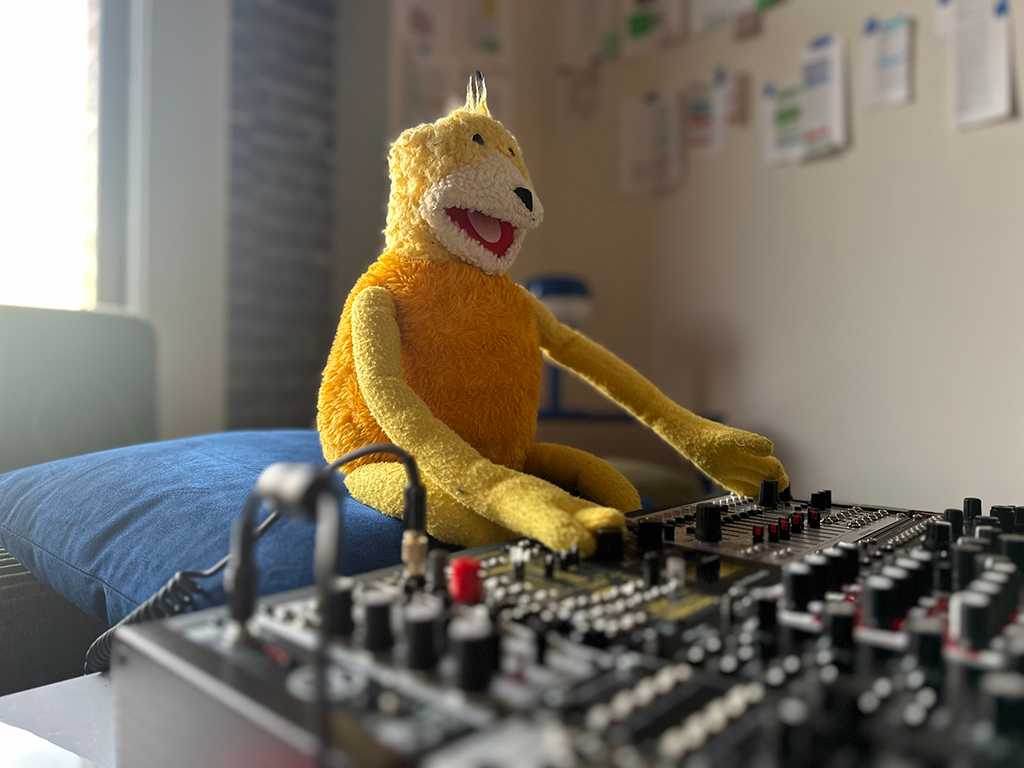
Rising like a brutalist tower of sonic possibility, eight Arturia RackBrute cases form an imposing wall of synthesis—a modular fortress where East Coast aggression meets West Coast philosophy in a spectacular collision of voltages and ideas. At its heart, the Erica Synths modules bring their signature Baltic darkness—oscillators that growl and snarl with industrial precision, their raw waveforms feeding into filters that can scream like banshees or purr with analog warmth. These form the system's aggressive backbone, the modules' stark black panels punctuated by bold graphics that seem to pulse with barely contained energy. Scattered throughout like windows into an alternate timeline, the Tip Top Audio Buchla 200 series modules glow with their distinctive metallic faces—a recreation of Don Buchla's revolutionary designs now speaking fluent Eurorack.
Their complex oscillators and low-pass gates bring that unmistakable West Coast wobble and pluck, creating organic textures that breathe and evolve like living creatures. The Intellijel Metropolix stands as the system's neural command center—a sequencing powerhouse whose multiple lanes of triggers and modulation paint elaborate musical narratives across the sprawling patch bay. Below it, the Atlantix hums with semi-modular sophistication, its normalized routing offering islands of predictability in this ocean of chaos while still opening its signal path to the wider ecosystem. The Jomox Mod FM module injects pure digital mayhem into this analog playground, its frequency modulation algorithms capable of everything from crystalline bell tones to sounds that seem to tear reality itself. Meanwhile, the Neuzeit Warp bends time and space, warping incoming signals through dimensions unknown, adding layers of movement that make static patches dance and evolve.

At the base of this towering instrument, the 1010 Music Bluebox serves as mission control—a compact digital mixer that somehow manages to wrangle the countless voices pouring from above into a cohesive stereo field, its touchscreen interface glowing like a portal between the analog and digital realms. The entire system resembles a cyberpunk cathedral organ, with hundreds of patch cables cascading down its face like technicolor waterfalls, each connection a synaptic firing in this vast electronic brain. It's an instrument that demands both careful planning and wild experimentation—capable of producing everything from delicate ambient soundscapes to full-force techno storms that could level dance floors. This is not just a modular synthesizer; it's a sonic research facility, a playground for voltage-controlled exploration, and a monument to the endless possibilities that emerge when you give electricity a voice and teach it to sing.
